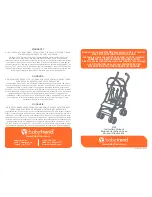
MX31 Cab, MX31FU Radio Cab Page 23
SWI MENU
.
> SYSTEM MENÜ
OPERATOR mode
The currently active mode is marked with a check mark.
EXPERT mode
GUEST mode
RECALL MEMORY A+
A ]
LIST OF NAMES E
-
4 ]
Enters the recall memory, list of names, programming and
SERV MODE PROG E
-
MN ]
E-Procedures
.
RUN OPER PROG E
-
F ]
NAM Name allocation E+4 ]
See the chapters “Recall memory and list of names”,
M/D Toggle/Latched E+7 ]
“E-Procedures” and “Programming” for the actual procedures!
RUB Memory depth E+8 ]
SYSTEM MENU
.
Exit SYSTEM MENU in LOCO or SWI with the E key!
> CAB MENU
x SET GLOBAL CLOCK
x DEF Switch ladders
x DEF System autonom. block
x DEF + ACT ARS
x DEF + ACT AOS
PROG MX1
x PROG Booster
PROG Radio module
PROG MX8 module
PROG MX9 module
CAB MENU .
Exit CAB MENU within SYSTEM menu with the
E key!
> SET LOCAL CLOCK
Display AMP METER
Select LANGUAGE
DEF Soft Key’s for switches
Defines the soft key’s for turnout actuation
Display and LED dimming
x Ambient light sensor.
x Auto. name propagation
x Leading Zero's
x Timeout
Change PIN
RESET CAB
x … Indicates parts of the menu that has not been implemented yet but is planned for future
SW version.
Consult the corresponding chapters on E-Procedures (E +…) and programming procedures (PROG
…). The following describes only procedures that can be reached exclusively through the menus!
SYSTEM MENU
Description
MENU Soft Keys for switches U
Defines the soft keys for turnout actuation
LEFT ENTRY
This part of the menu is entered from the SWI mode;
469
the turnout address remains displayed. The newly
defined and selected allocations are displayed in the
Soft Key Scroll Level: 7
lower part of the screen.
I: 469.2 II: - - - III: 63:3
A Accept E Esc C Clear . .
During soft key definition, the switch addresses can be called to the foreground from the recall mem-
ory with the
W key
, just as in the normal SWI mode. NOTE: It is not possible to switch to the tabular
display of the recall memory, list of names or to the address input page while in the definition mode!
To assign a turnout (or other accessory) to one of the three soft keys (I, II, III), actuate that turnout
with the appropriate number key then press the desired soft key within 2 seconds. The display im-
mediately shows the new assignment.
The turnout can be actuated with the assigned soft key while still in the definitions procedure as well
as after returning to the LOCO or SWI mode.
Note: It will be possible in future SW versions to assign turnout ladders, so that several turnouts can
be actuated with one soft key.
The soft key levels
: The soft keys can be assigned 10 levels deep for different addresses so that
more than only 3 soft key functions become available, i.e. 3 x 10 = 30 turnouts but also mixed with
other accessories or the standard key functions.
These levels are accessible in the definitions mode with the scroll wheel and shown in the display;
each allocation made applies only to the displayed soft key level.
Exiting the definitions procedure:
Key A = Accept
New allocations will be accepted.
Key E = Exit Allocations (or changes) will not be accepted.
Key C = Clear
Clears (deletes) all soft key allocations in this level.
The
soft keys are available for turnout actuations (in the LOCO or SWI mode)
according to their
definition and are identified accordingly in the lower display bar (OPERATOR mode) or in the lower
right field (EXPERT mode).
The
soft key level
is generally
selected with the scroll wheel.
If the scroll wheel by default is used
for a different function, it must first be switched to this function with the help of the
(shift) key!
In the EXPERT mode, where the lower display half shows the recall memory preview in both the
LOCO or SWI mode, the soft key levels can be reached by scrolling to the end of the recall memory
table.
See chapter „ LOCO and SWI handling in EXPERT mode“!
Содержание MX31FU
Страница 6: ...Page 6 MX31 Cab MX31FU Radio Cab 4 QUICK GUIDE...
Страница 7: ...MX31 Cab MX31FU Radio Cab Page 7...
Страница 29: ...MX31 Cab MX31FU Radio Cab Page 29...







































